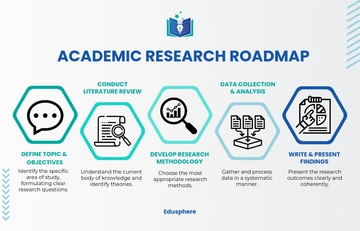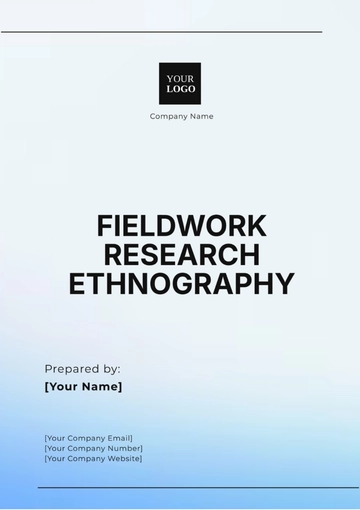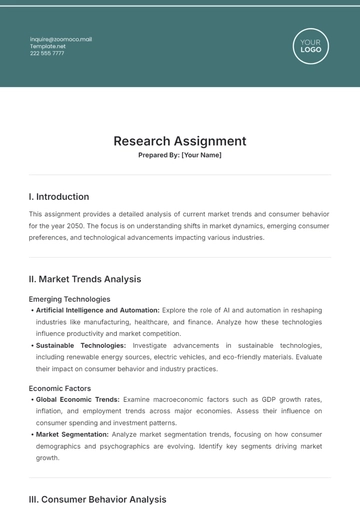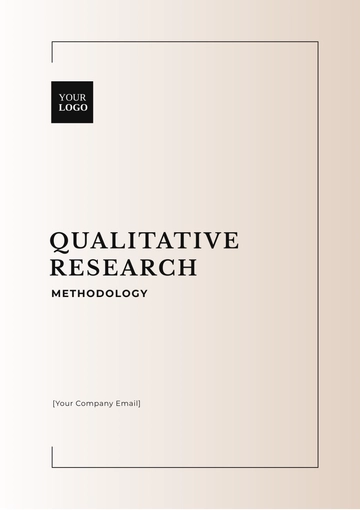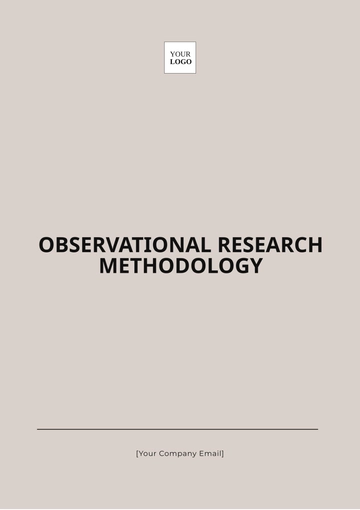Free Historical Design Research Process
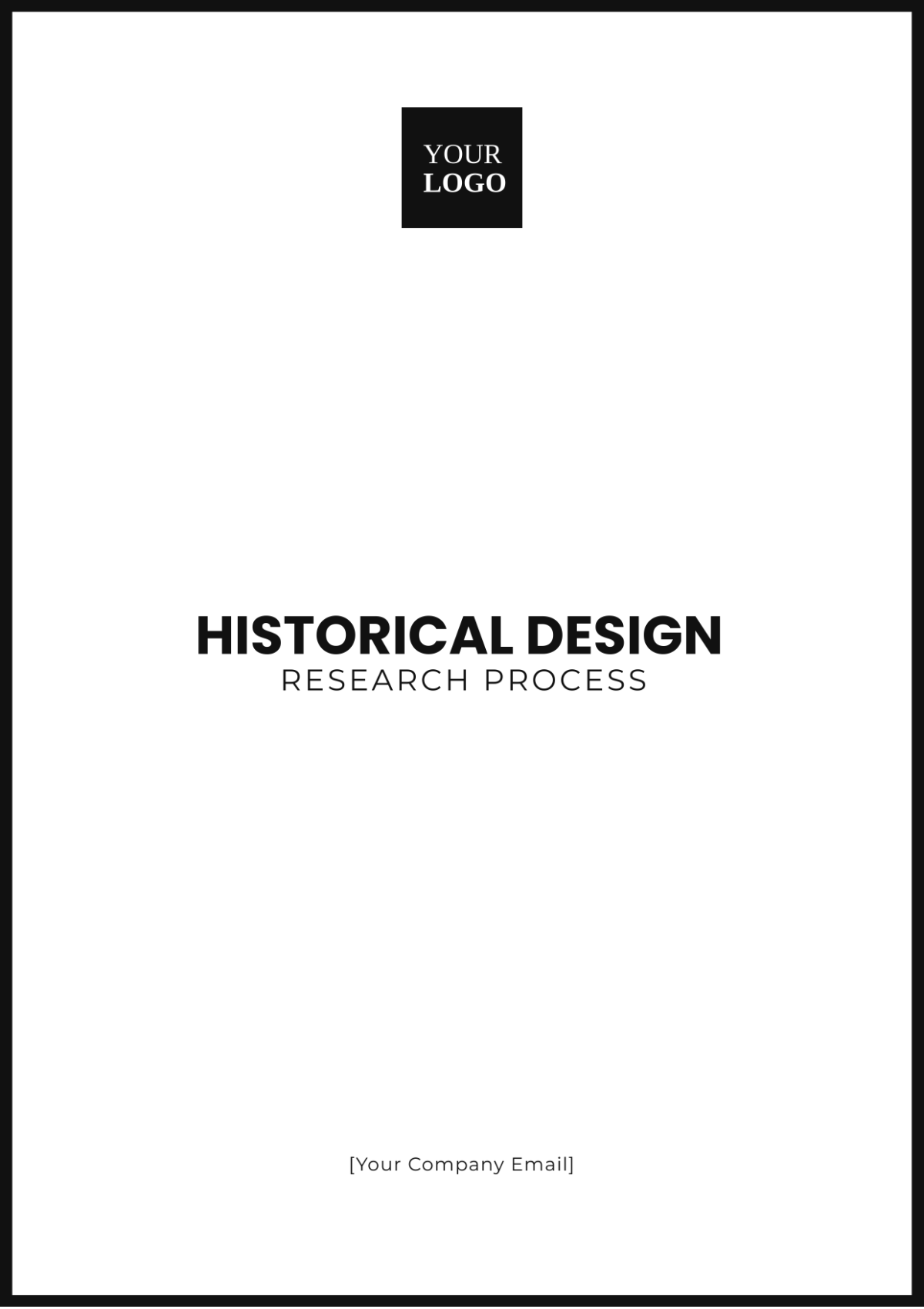
Researcher: [Your Name]
Date: [Date]
I. Introduction
The field of design is ever-evolving, drawing inspiration from various historical periods and cultural contexts. An Historical Design Research Process involves studying and analyzing historical designs, artifacts, or architectural works to understand their development, cultural significance, and influence on modern design. This research is essential in preserving cultural heritage and informing contemporary design practices, bridging the past with the present. This study explores the methodologies adopted in historical design research, analyzing specific case studies to highlight the relevance and application of historical insights in contemporary design.
II. Literature Review
The literature on historical design research has expanded in scope and depth in recent decades, drawing from diverse fields such as art history, digital humanities, architecture, and advanced design theory. Key sources include:
Jones, P. (2051). Design Theory in Ancient Contexts, 4th Edition. New York: Routledge.
This updated edition provides an in-depth analysis of design theories applied to ancient artifacts, incorporating recent archaeological discoveries and digital reconstruction techniques.
Smith, R. & Brown, T. (2053). Artifact and Meaning: Cultural Significance of Historical Designs in the Post-Digital Era. London: Thames & Hudson.
This work explores how digital technologies have transformed the study of historical artifacts, emphasizing the continuing cultural significance of these designs in the 21st century.
Wilson, L. (2054). From Past to Present: Architectural Influences in the Age of Smart Cities. Chicago: University of Chicago Press.
Wilson examines the impact of historical architectural styles on the development of smart cities, highlighting how traditional forms and techniques are adapted to modern urban environments.
These sources provide comprehensive insights into the methodologies employed in contemporary historical design research and discuss the integration of advanced technologies in studying historical designs. They also address the significance of cultural context in understanding how historical designs are adopted, adapted, and interpreted in modern times.
III. Methodology
The research process for the Historical Design Research Process of 2050 includes several advanced steps:
Selection of Historical Designs: Identify significant historical artifacts, designs, or architectural works from different periods and cultures, using AI-driven databases and digital archives that compile and cross-reference global historical designs.
Documentary Research: Conduct extensive reviews of historical documents, blueprints, and visual representations using augmented reality (AR) tools and immersive virtual environments, allowing for a more interactive and detailed analysis of designs.
Field Studies: Visit preserved historical sites, museums, and digital archives to observe and analyze the designs directly. Utilize drone technology and 3D scanning to capture detailed images and structural data for further analysis.
Comparative Analysis: Compare historical designs with contemporary and speculative future practices to identify influences and transformations. Employ AI-driven pattern recognition tools to trace design elements across different periods.
Design Theory Application: Apply contemporary and future-oriented design theories to interpret the historical significance and relevance of the designs in today's and tomorrow's design landscape.
IV. Analysis
The analysis phase involves a comprehensive examination and interpretation of the collected data, including:
Historical Contextualization: Understand the cultural, social, and technological conditions during the period when the designs were created, using advanced data analytics and historical simulations.
Stylistic Features: Identify distinctive stylistic elements and techniques in historical designs using AI-assisted visual analysis, which can detect patterns and features across large datasets.
Cultural Significance: Investigate the cultural meanings and functions assigned to designs, incorporating perspectives from global and indigenous cultures using a multidisciplinary approach.
Influence on Modern Design: Trace the transmission, adaptation, and evolution of historical design elements in contemporary and future works. Explore how ancient styles are reinterpreted in the context of smart cities, sustainable architecture, and digital art.
A table presenting sample historical designs and their modern and speculative future counterparts is provided below.
Historical Design | Modern Influence | Speculative Future Influence |
|---|---|---|
Ancient Greek Columns | Neo-Classical Architecture | Modular Smart Columns in Urban Design |
Art Nouveau Decorative Arts | Modern Organic Forms | Bio-Adaptive Decorative Structures |
Bauhaus Functionalism | Minimalist Modern Design | AI-Optimized Minimalist Living Spaces |
Gothic Cathedral Arches | Neo-Gothic High-Rise Buildings | Vertical Arcologies with Neo-Gothic Facades |
Japanese Zen Gardens | Minimalist Landscape Architecture | Eco-Sensitive Urban Micro-Gardens |
V. Findings
The research reveals several critical findings:
Continuity and Adaptation: Historical designs often exhibit a continuity that evolves through adaptation to changing cultural, technological, and environmental contexts. This adaptability is critical in creating designs that resonate across different eras.
Cultural Preservation: Understanding historical designs is crucial for preserving cultural heritage, fostering a sense of identity, and maintaining continuity in modern and future design practices, particularly in the face of rapid technological change.
Innovative Inspiration: Historical designs provide a rich source of inspiration, promoting innovation that is both grounded in historical knowledge and enhanced by contemporary technology. This duality is essential in creating designs that are both forward-looking and deeply rooted in cultural heritage.
VI. Conclusion
In conclusion, the Historical Design Research Process is integral to bridging the gap between past and present design practices. By studying historical designs, contemporary designers can draw valuable insights, fostering innovation while preserving cultural heritage. This research underscores the importance of historical awareness in informing and enriching modern design practices.
VII. References
Jones, P. (2051). Design Theory in Ancient Contexts, 4th Edition. New York: Routledge.
Smith, R. & Brown, T. (2053). Artifact and Meaning: Cultural Significance of Historical Designs in the Post-Digital Era. London: Thames & Hudson.
Wilson, L. (2054). From Past to Present: Architectural Influences in the Age of Smart Cities. Chicago: University of Chicago Press.
VIII. Appendices
Appendix A: List of Historical Sites Visited
The Parthenon, Athens, Greece (Visit Date: July 2051)
Alhambra Palace, Granada, Spain (Visit Date: September 2052)
Kyoto Imperial Palace, Kyoto, Japan (Visit Date: April 2053)
Appendix B: Sample Historical Design Documents
Digitized Blueprint of the Eiffel Tower (Original Date: 1887)
3D Scanned Model of a Gothic Cathedral (Original Construction Date: 1248)
Augmented Reality Reconstruction of an Ancient Roman Villa (Original Date: 70 AD)
- 100% Customizable, free editor
- Access 1 Million+ Templates, photo’s & graphics
- Download or share as a template
- Click and replace photos, graphics, text, backgrounds
- Resize, crop, AI write & more
- Access advanced editor
Unlock the past with our Historical Design Research Process Template on Template.net. This editable and customizable template helps you structure research that dives deep into historical design principles. Editable in our Ai Editor Tool, it allows you to tailor the research process to your specific needs, ensuring a comprehensive understanding of historical contexts and design influences.












